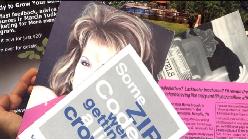| |
Clone Your Best Customers
by Marcia Yudkin
Two businesses -
a women's clothing boutique and a mail-order
operation - recently consulted me about the same
dilemma. Each had achieved satisfying sales
through channels that didn't allow for further
growth. They needed a fresh marketing program
that would yield a steady stream of new
customers, and they were confused about where
and how to advertise.
Like Dorothy with the ruby slippers in the
Wizard of Oz, they already had most of what they
needed for a solution, but they didn't know how
to use what they had. They needed to investigate
who their buyers - especially their
highest-spending and most frequent patrons -
were. In doing so, they'd learn how to clone
their best customers.
The general principle: Discover the
characteristics of your current customers and
use that knowledge to reach more shoppers just
like them.
The clothing store already knew the age range,
income level and some cultural interests and
hobbies of its clientele. I suggested that they
find out which newspapers, magazines and TV and
radio programs their buyers read, watch or
listen to, as these might prove prime
advertising vehicles. Once ads are running in
many places, you can also ask customers which
media outlet persuaded them to come into the
store, although many buyers don't remember this
information.
The mail-order operation had little knowledge of
the income or the educational level of its
purchasers, since orders so far had come in
through the anonymity of the Internet. However,
it was relatively simple for them to send a
follow-up questionnaire by e-mail, which asked a
buyer's age, educational background, employment
status (employed or self-employed), income
bracket and profession. The brief questionnaire
also asked how satisfied they were with their
purchase, generating glowing testimonials along
with a few complaints. Questionnaire answers
would help this business intelligently choose
where to advertise.
To the clothing store, I suggested marketing
strategies besides advertising for cloning its
best customers. Since many store regulars were
involved with charitable organizations, the
store could let buyers know, through a postcard
to its mailing list or a flyer slipped in with
purchases, that it might produce a fashion show
to benefit their favorite charity. Most likely,
customers' dearest non-profit organization
appealed to others who would also be attracted
to the boutique's distinctive style of clothing.
|
Overwhelmed by
Having to Describe 17 (or 1,777)
Products?
Never be brain-dead again when it comes
to making items sound distinctive and
tantalizing. This how-to manual and
brainstorming guide comes to the rescue,
with the keys to effective product
descriptions for print or online
catalogs or sales pieces.
Write catalog copy
easily.
|
Since many patrons had creative hobbies, like
painting, music, weaving or writing, it made
sense to appeal to others who spent spare time
on the arts. I suggested selecting a different
customer's creative work to feature in the store
every month. I envisioned a display of one
woman's pottery or poetry, with a color photo of
her wearing the store's clothing. Surely the
woman in the spotlight would bring in friends
like herself and patrons would urge their
creative women friends to apply for the honor.
Scientists say human cloning isn't quite on the
horizon, but in marketing cloning techniques
like these already produce new customers!
Copyright 2004
Marcia Yudkin. All rights reserved.
No-Hype Marketing Online Courses
Create a Practical One-Year Marketing Plan
Teleteach for Profit: Set Up Profitable
Teleseminars & Webinars
The Mighty Postcard Marketing Course
Marketing for Introverts |





